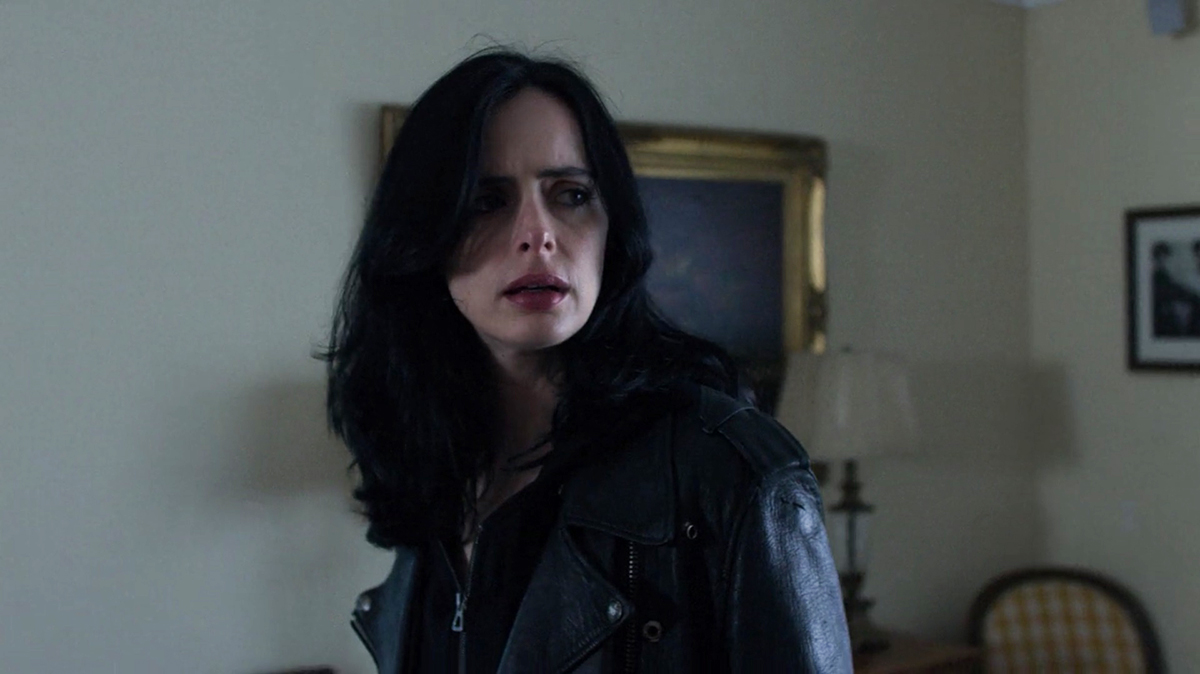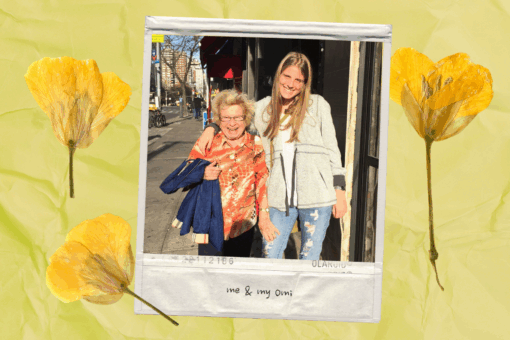Season 2 of Jessica Jones premiered on March 8. (This has no spoilers, we promise.) For Jewish viewers, episode 2 was a shockingly accurate depiction of one of the most sacrosanct Jewish traditions: sitting shiva.
Jessica (Krysten Ritter), investigating a secret lab group that experimented on her, discovers that a physician, Dr. Kozlov, is related to the lab group. She shows up at his house and discovers he has died, and stumbles into his shiva.
The shiva is remarkably well-depicted for such a non-Jewish show, with just one small hiccup. Let’s break it down:
1. The Hebrew condolences at the beginning.
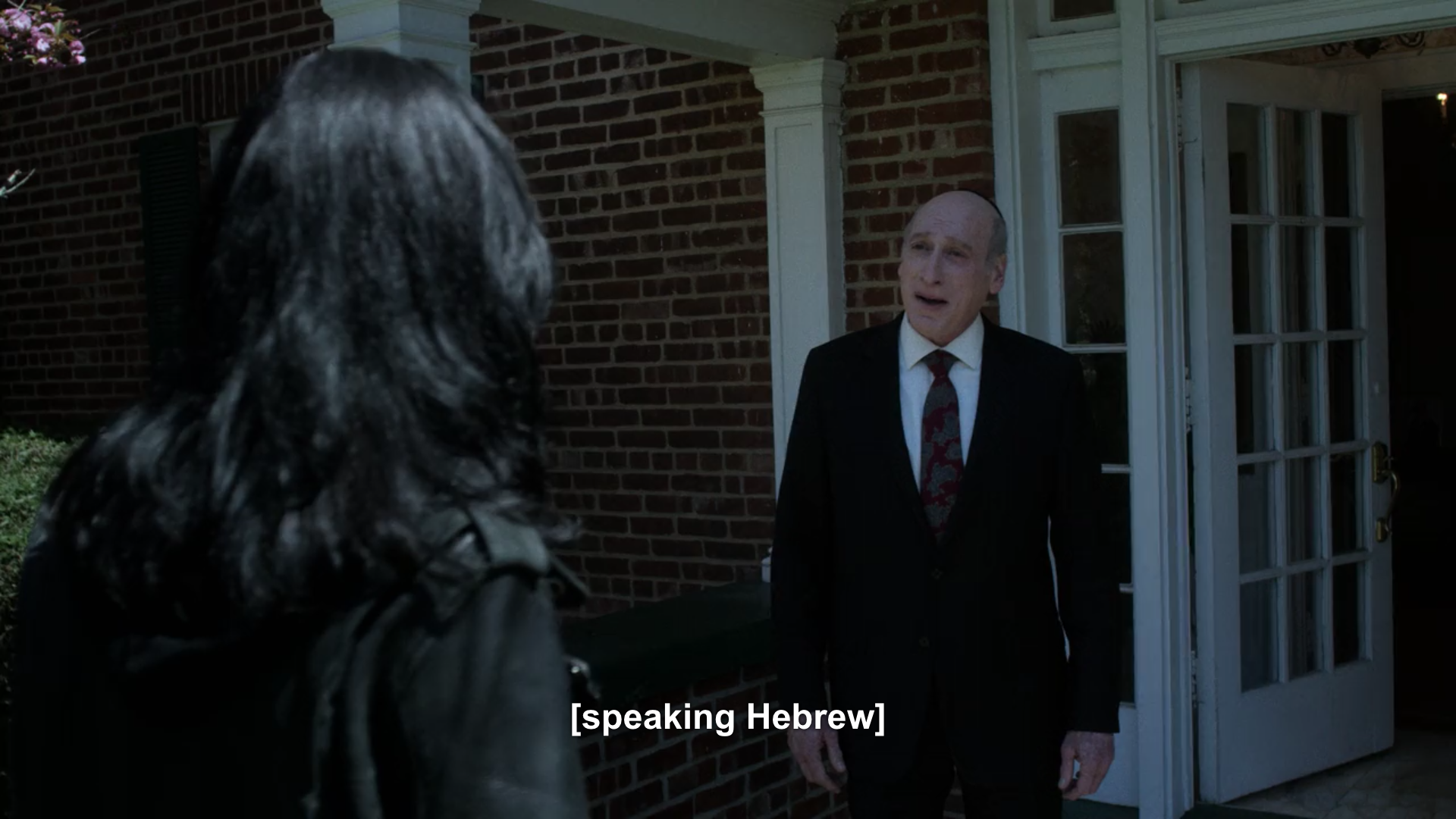
While Netflix did not bother to caption the Hebrew, the man tells Jessica, “תנחומי” (tanchumai), which translates to “my condolences.” While you are not likely to hear this phrase at the shiva of an American Jew, at least the show is using accurately pronounced (and contextually correct) Hebrew.
2. The candle and kippot at the entrance.
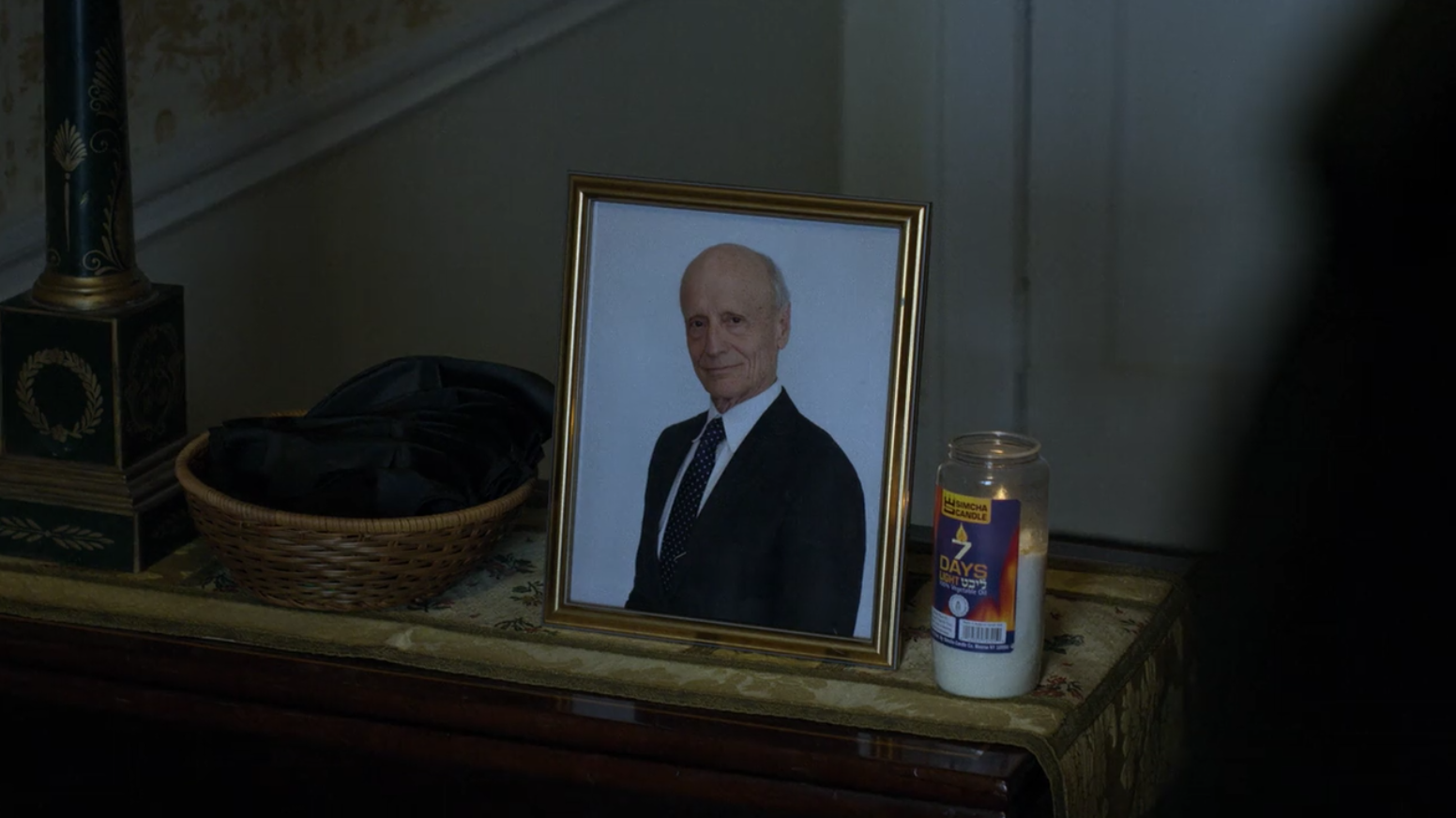
Sitting shiva lasts seven days, and often mourners will light special candles during that time. The one depicted in Jessica Jones says “simcha candle” on the label — we were initially thrown because simcha means happy occasion, so it did not strike us as a yahzreit candle. But thanks to Alma readers, we learned “Simcha” is the name of the company that makes candles for all different purposes. Still, when you walk into a home of a shiva, men are encouraged to wear a kippah in respect for Jewish tradition… hence the basket of kippot.
3. The minyan.
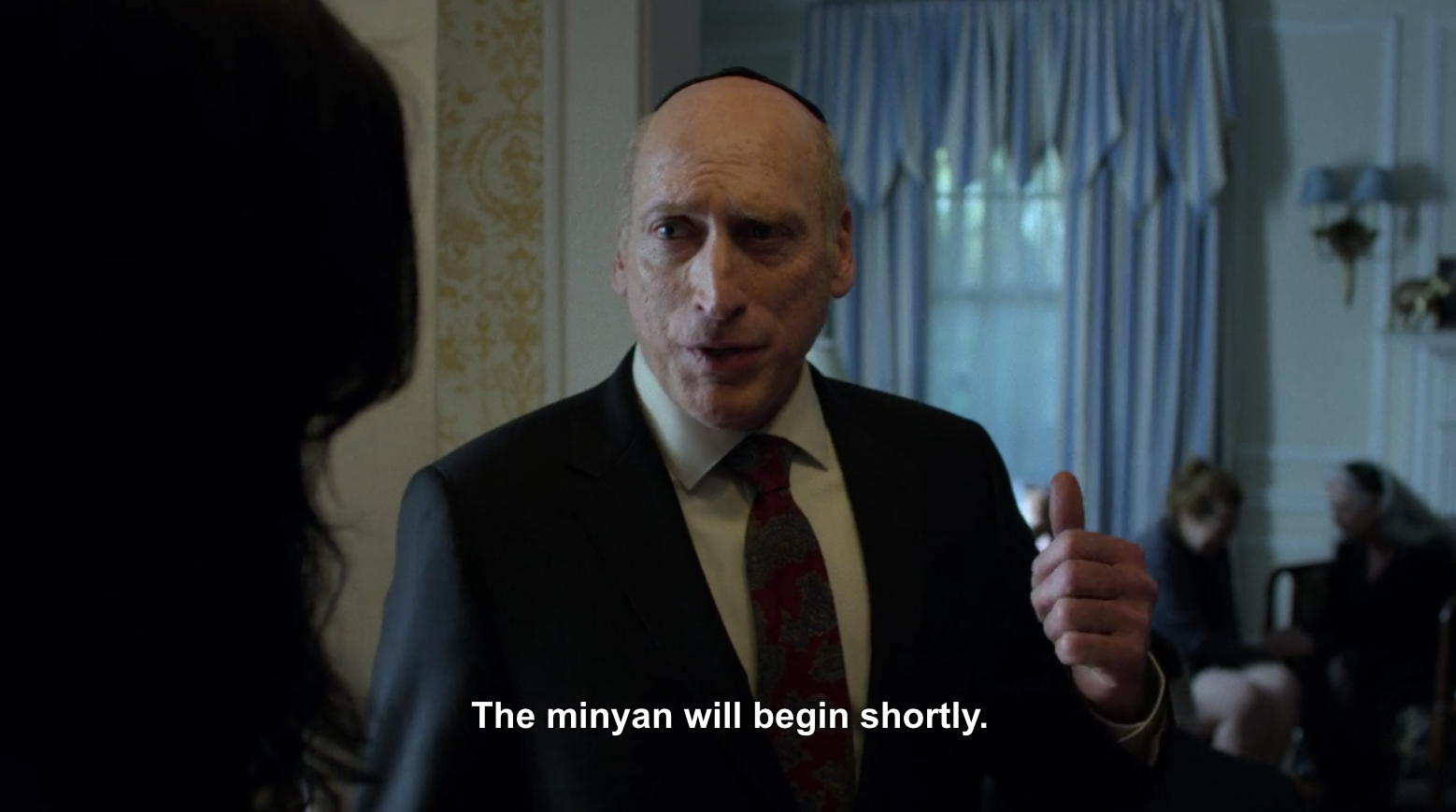
During shiva, according to My Jewish Learning, “three prayer services are conducted each day at the shiva house, with guests forming what is called a shiva minyan (the prayer quorum of 10 adult Jews). During these services, mourners recite the Mourner’s Kaddish.” The man here tells Jessica that the shiva minyan is about to begin.
4. The covered mirrors.
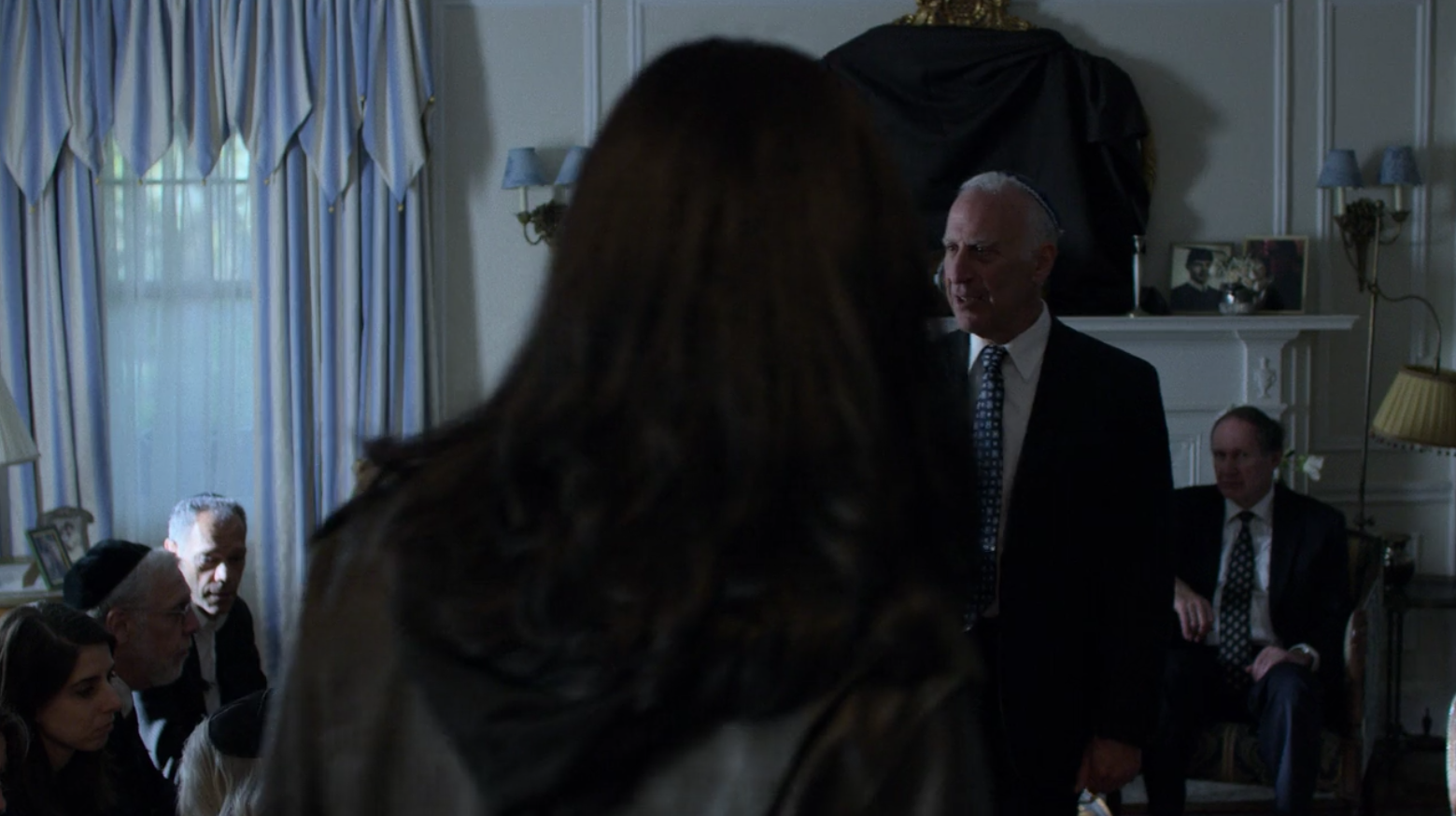
Kinda dark in this image, but you can see in the background the covered mirrors. Traditionally, during shiva, people shouldn’t be able to see their reflection in a shiva home. As My Jewish Learning writes, “The practice of covering the mirrors began centuries ago and was based on a belief that spirits were attracted to mirrors. Some people thought that the soul could be trapped in the reflection or that the dead person’s spirit lingered on earth for a time and might reach out from ‘the other side.’ Regardless of its symbolism, covering mirrors is a striking visual cue, a token of the disruption and grief felt by everyone who enters the house.”
5. Bringing tupperwares of food.
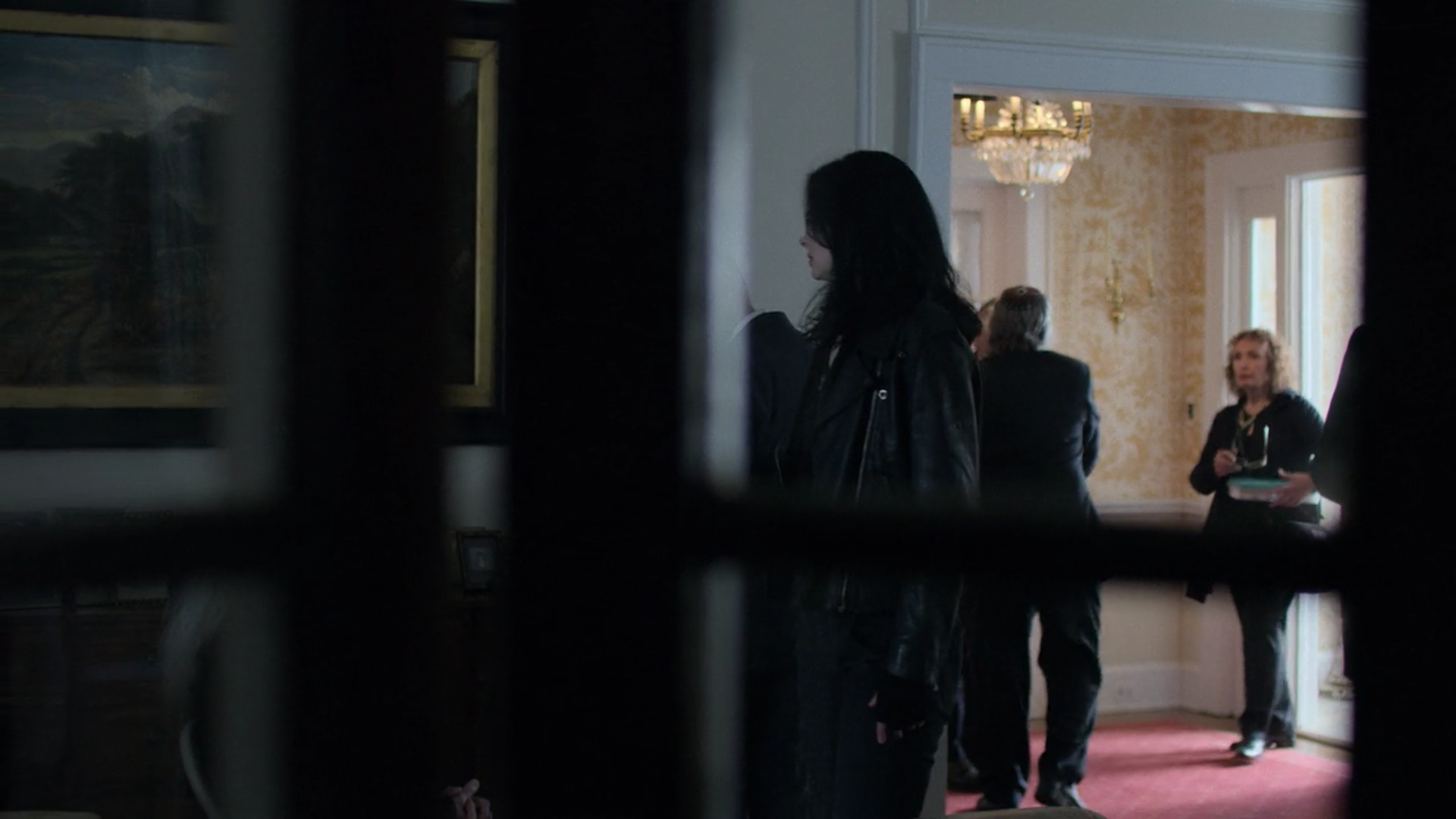
As Jessica walks into the house, you can see a woman enter in the background holding a Tupperware of food (we can only imagine it’s a kugel inside). During shiva, many in the community will organize to bring the family meals and other necessities. This small image — of a woman bringing food with her — shows how well the Jessica Jones writers understand shiva.
6. Prayer books for the minyan.
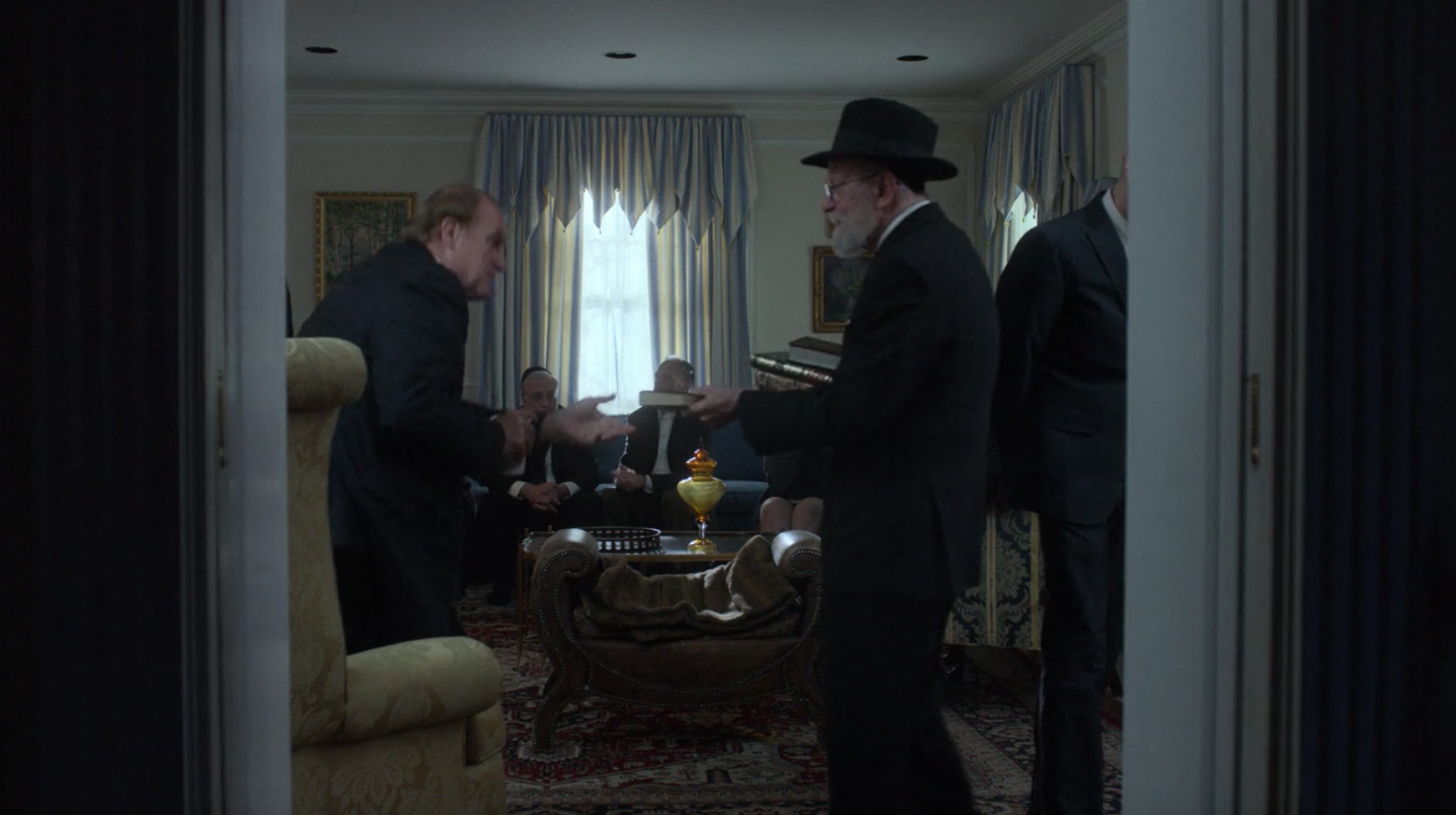
As they prepare for the shiva minyan, a man is pictured handing out prayer books. Again: This is super realistic.
7. Mourners sitting low to the ground.
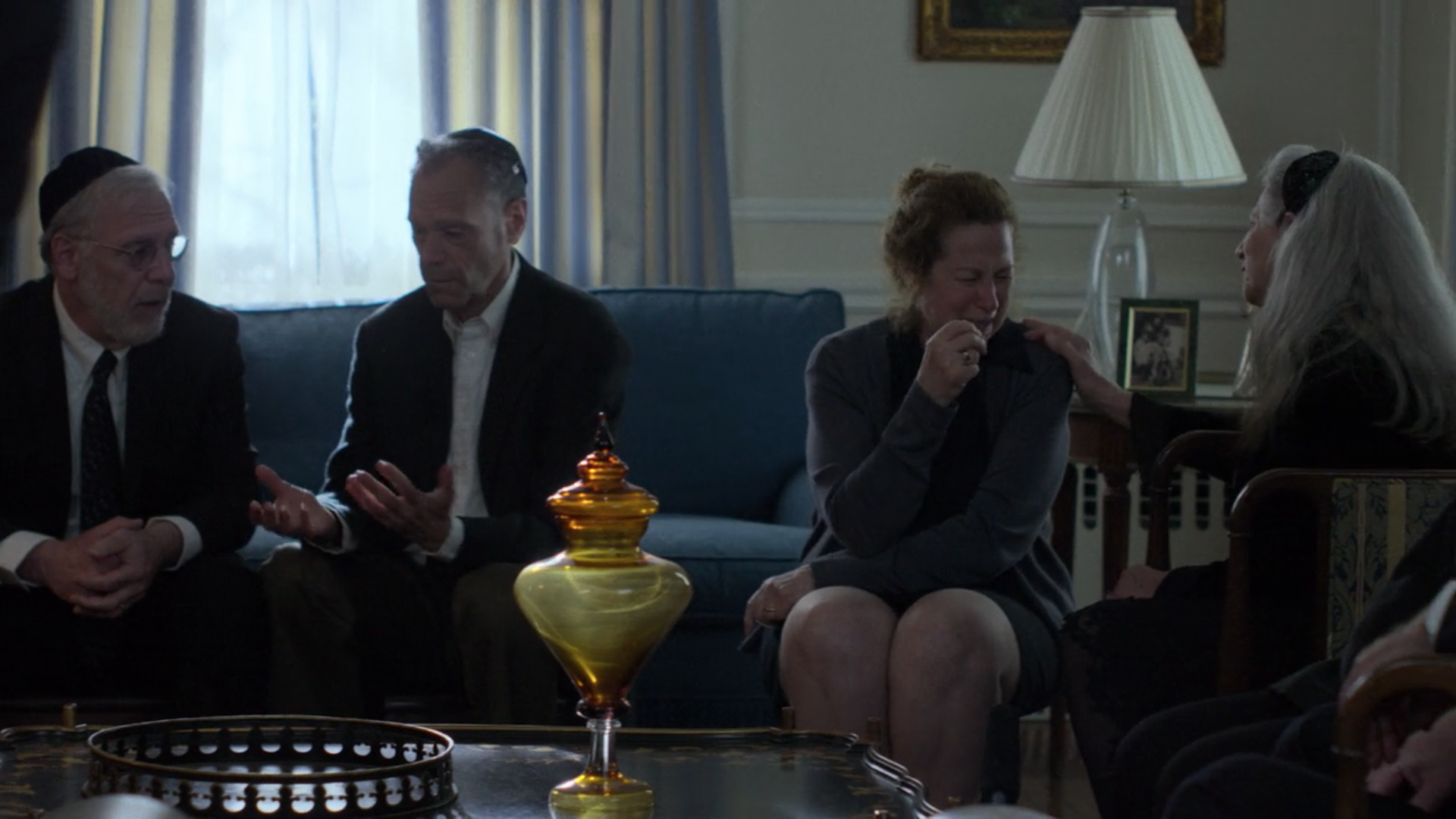
The woman here is Kozlov’s wife, not sitting on the couch, but on a stool low to the ground. As My Jewish Learning points out, “Sitting low to the ground–on the floor, on cushions, or special benches provided by the funeral home–is an outward sign of being struck down by grief. (Visitors sit on regular chairs and couches.)”
8. OK, not a shiva thing but… the presence of mezuzahs.
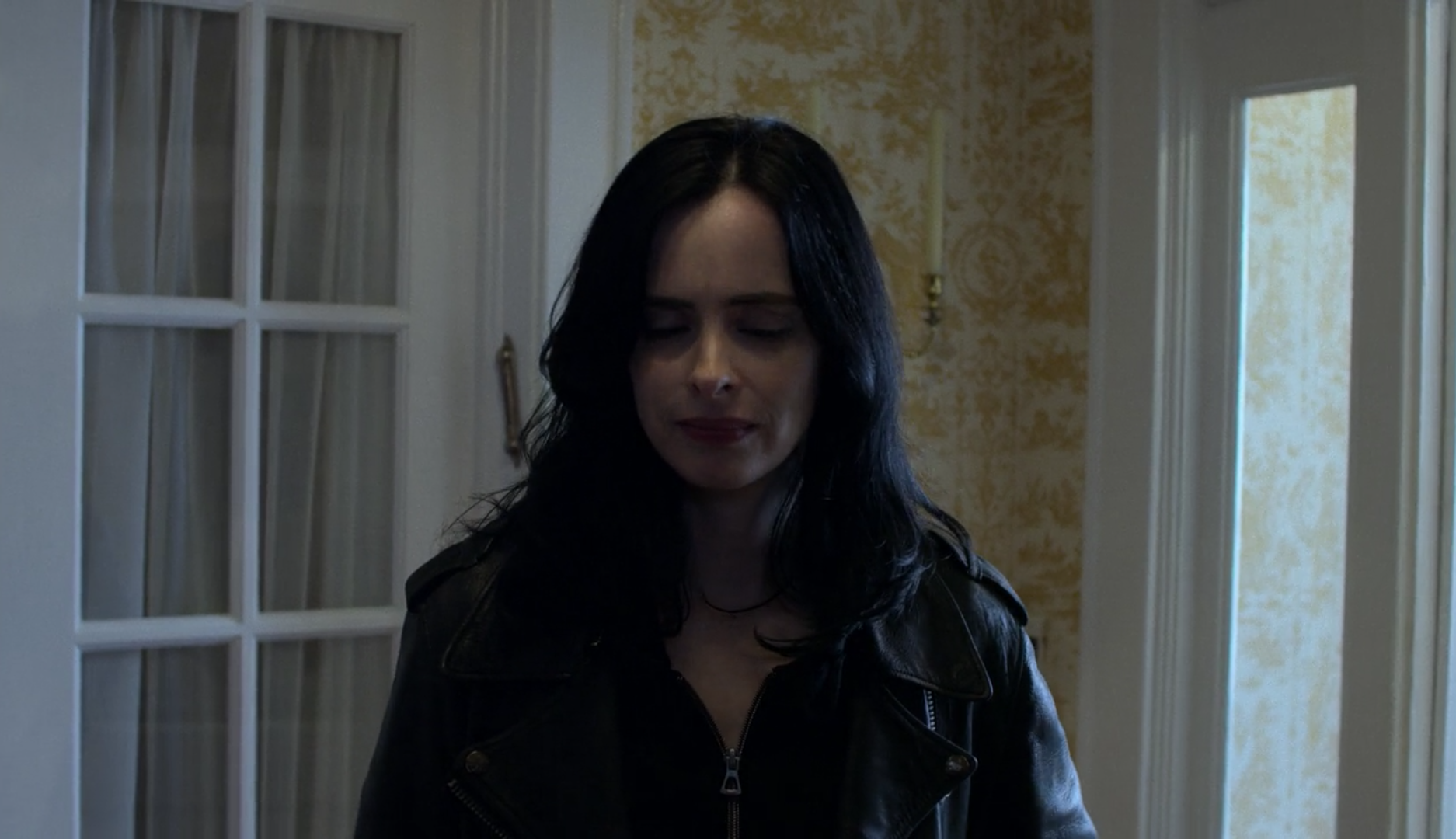
As Jessica walks around the house, you can see mezuzahs on the door frames to all the rooms. This signifies a Jewish home.
Well done, Jessica Jones.
